A2:1 condensation of 2-hydroxy naphthaldehyde with 1,3-diaminopropane have resulted symmetrical tet- radentate NNOO Schiff base ligand namely N,N -bis(2-hydroxy-naphthaldimine)-2,3-diaminopropane (napdap) and 1:1 mixing of this ligand with Zn(ClO4)2·6H2O in THF yielded the complex (N,N -bis(2-hydroxy-naphthaldimine)-2,3-diaminopropanato)zinc(II) (1). Characterizations of the compounds have been carried out by Elemental analyses, IR spectroscopy, Electro-spray ionization mass spectroscopy (ESI-MS), Thermal analysis and conductivity measurements. Excited state and emission profiles of the compounds have been investigated by UV-Vis absorbtion spectroscopy and steady state fluorescence spectroscopy techniques. Ver- tical excitations of the compounds responsible for their emissions have been further probed by ab-inito time dependent-density functional theory (TD-DFT) studies.
2-hidroksinaftaldehit ve 1,3-diaminopronanın 2:1 kondenzasyonu sonucu simetrik dörtdişli NNOO Schiff bazı ligantı, N,N -bis(2-hidroksi-naftaldimin)-2,3-diaminopropan (napdap) ve ligantın Zn(ClO4)2·6H2O ile THF içerisinde 1:1 karıştırılması ile (N,N -bis(2-hidroksi-naftaldimin)-2,3-diaminopropanato)çinko(II) kompleksi (1) sentezlendi. Bileşiklerin karakterizasyonları Elementel analiz, IR spektroskopisi, Elektro-sprey iyonlaşma kütle spektroskopisi (ESI-MS), Termik analiz and iletkenlik ölçümleri ile yapıldı. Bileşiklerin uyarılmış hal ve emisif özellikleri UV-Vis absorpsiyon spektroskopisi ve kararlı hal floresans spektroskopisi teknikleri ile incelendi. Bileşiklerin emisyonlarından sorumlu dikey uyarılma geçişleri daha ayrıntılı olarak ab-initio zamana-bağlı yoğunluk fonksiyonel teorisi çalışmaları ile incelendi.
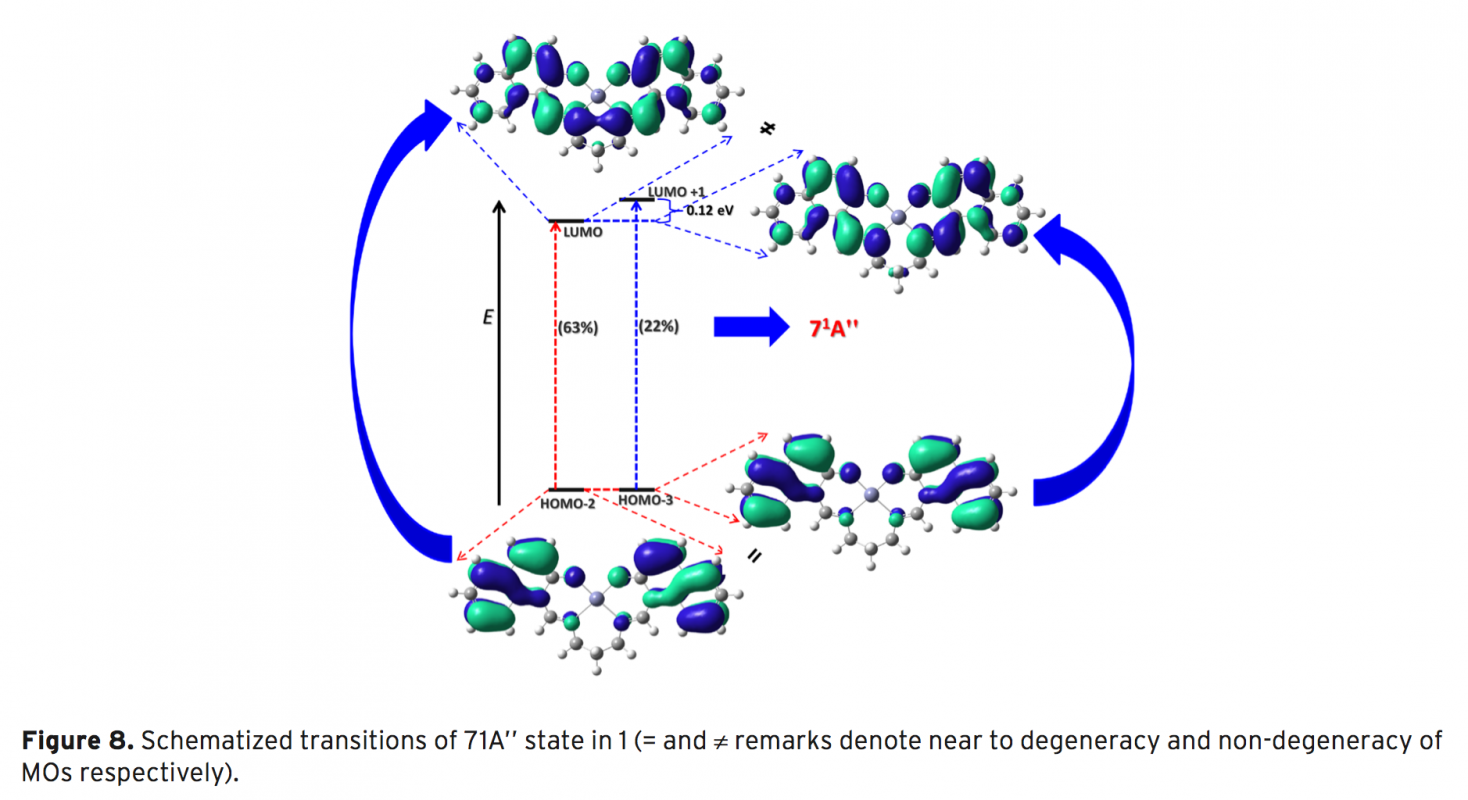
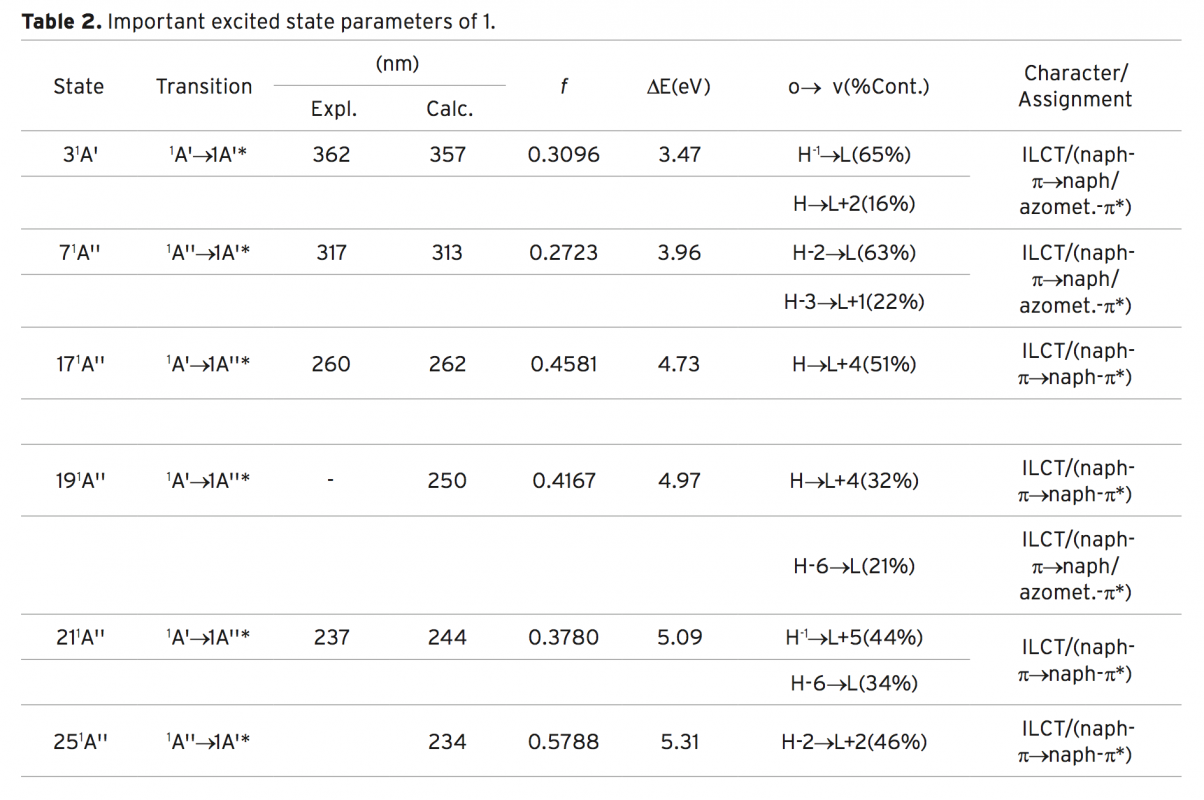
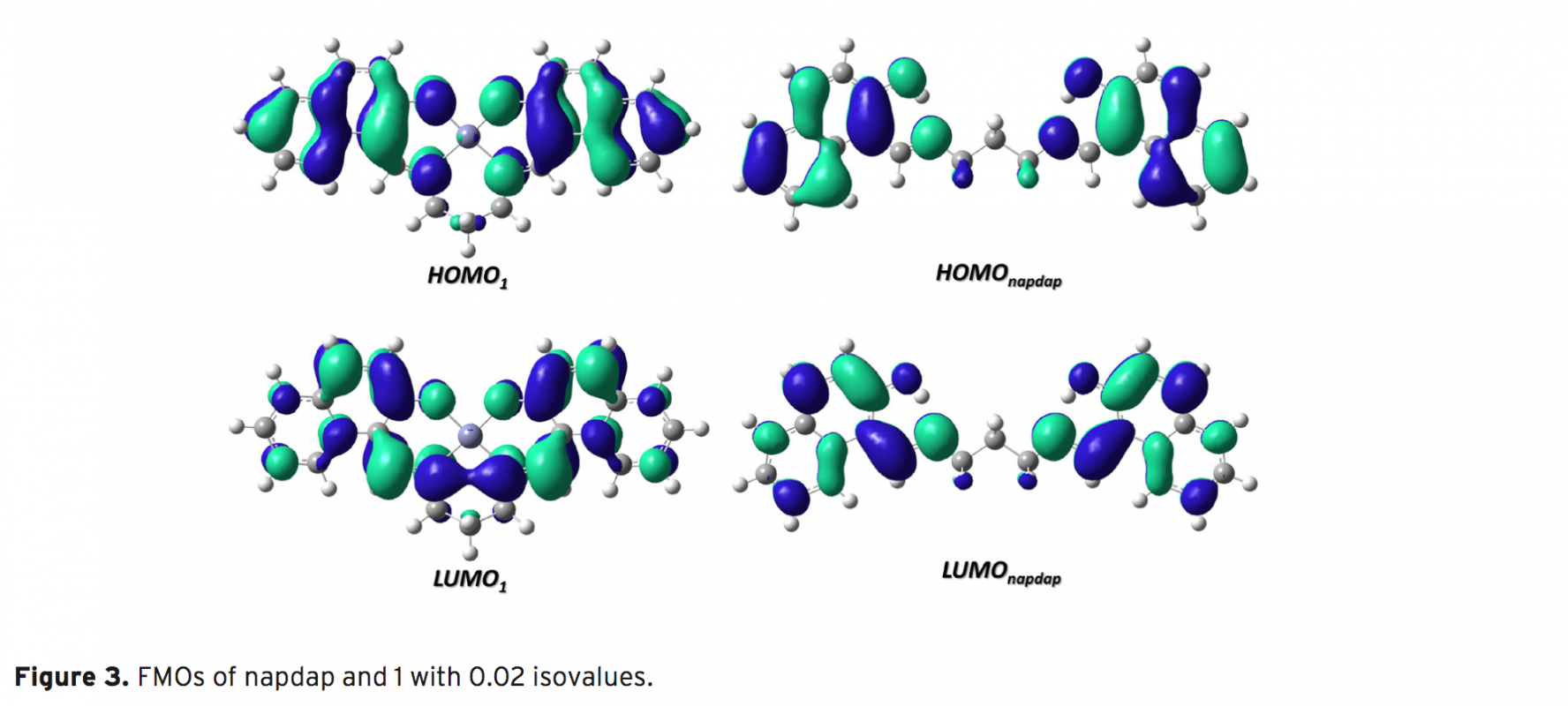

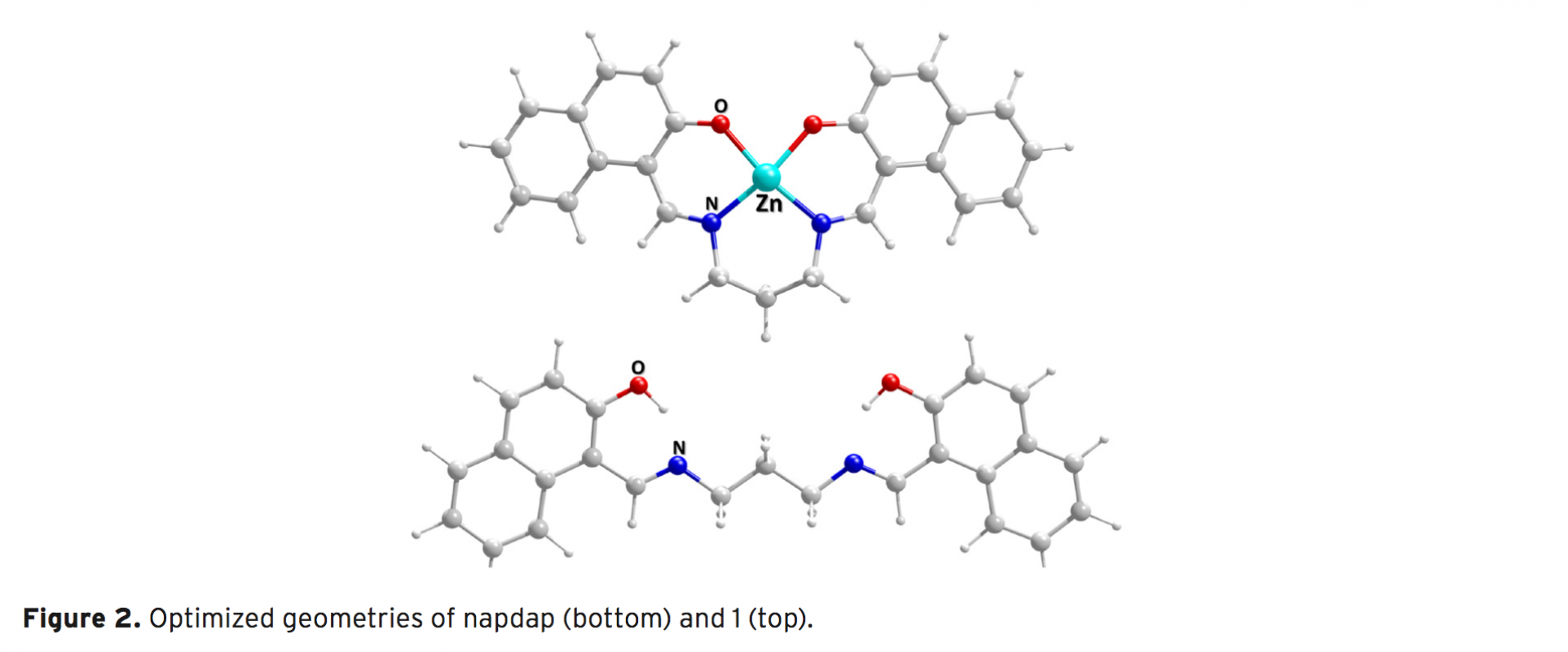
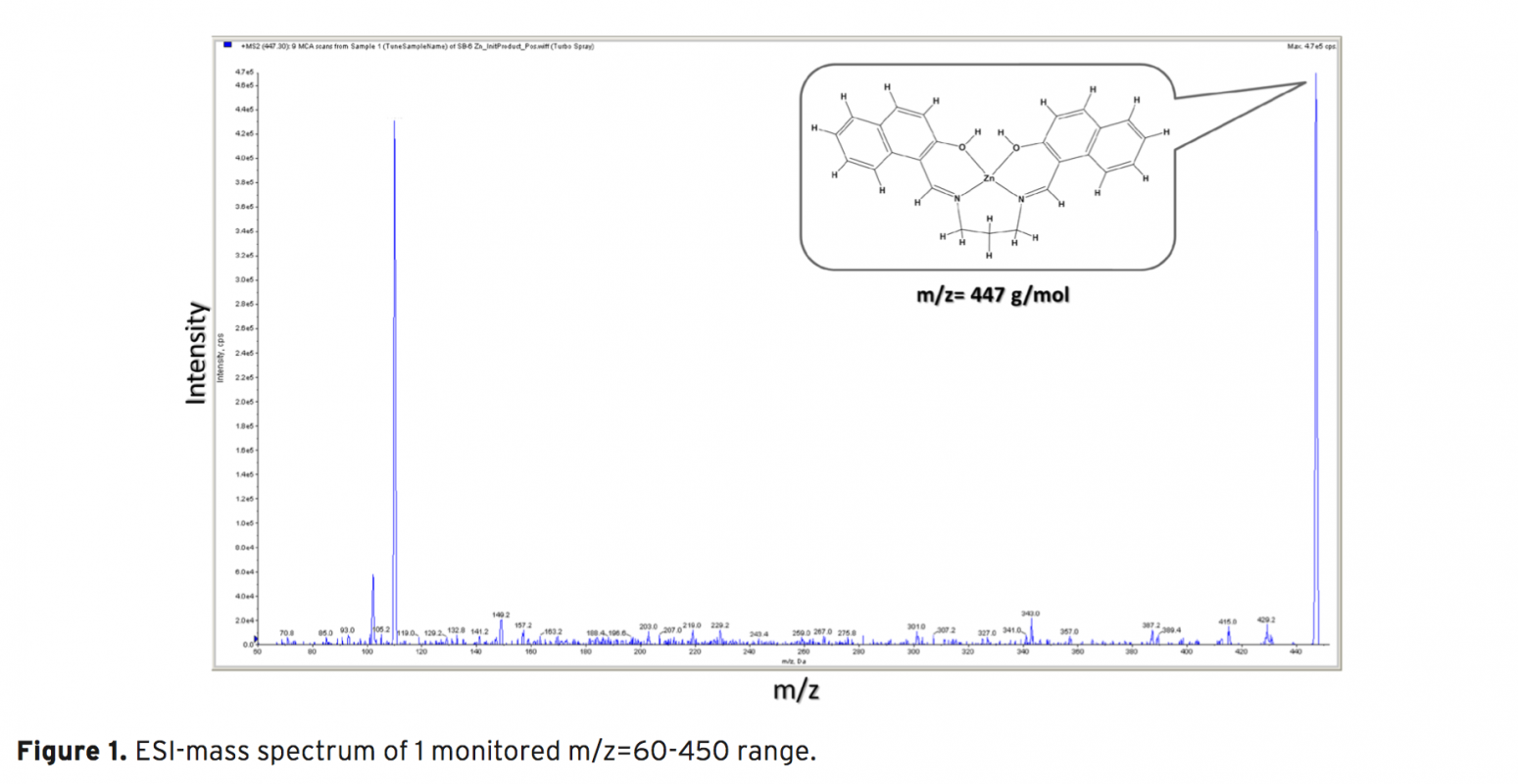
Download Article in PDF (1.3 MB)